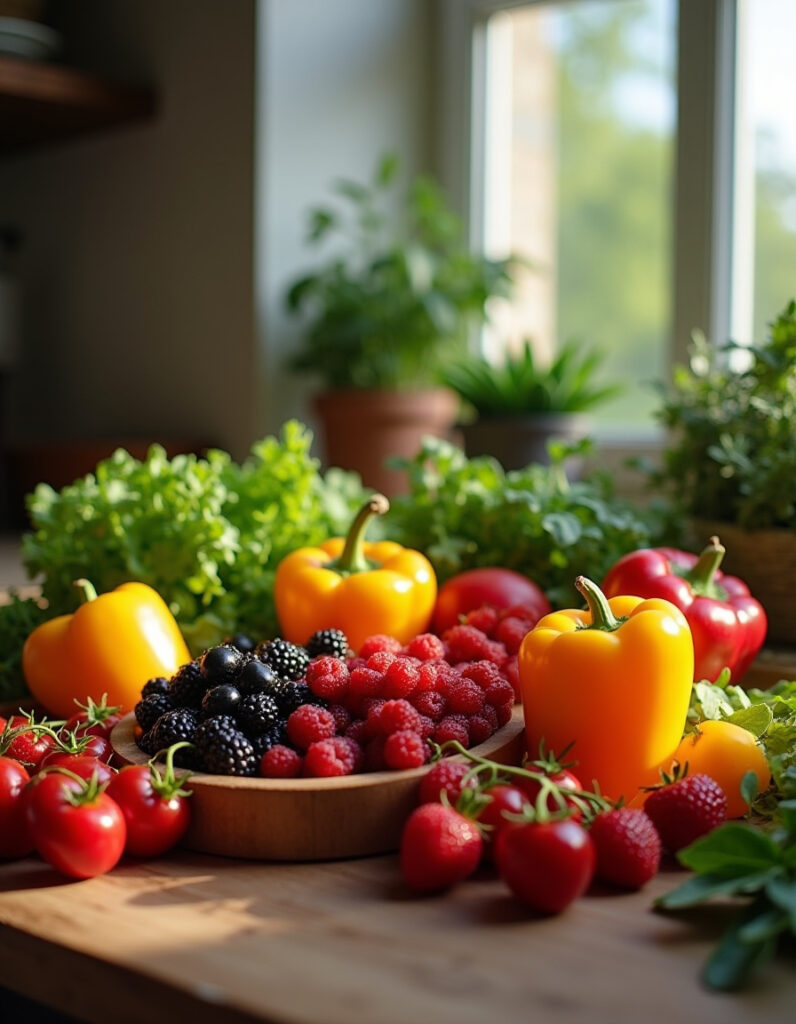
In 2025, polyphenols have emerged as the latest nutritional buzzword, and for good reason. These remarkable compounds found in fruits and vegetables are revealing themselves to be crucial players in maintaining our health. But before we dive into the fascinating world of polyphenols, let’s address a concerning statistic: across OECD countries, including the US and UK, only 15 percent of people consume the World Health Organization’s recommended 400g of fruits and vegetables daily – roughly equivalent to three apples.
This shortfall is particularly worrying given the mounting evidence of how these plant-based foods protect us against serious health conditions, including heart disease, stroke, type 2 diabetes, and various types of cancer. While we’ve long known that fruits and vegetables are “good for us,” recent research is uncovering the sophisticated mechanisms behind their health-promoting properties.
Beyond Basic Nutrition
When we think about the benefits of fruits and vegetables, we often focus on their vitamin and mineral content. While these nutrients are essential, they tell only part of the story. What makes these foods truly remarkable is their rich array of phytonutrients – natural compounds that give plants their distinctive colors and flavors while protecting them from environmental stresses and predators.
Among the thousands of known phytonutrients, polyphenols stand out as the most abundant and well-researched class. With over 8,000 identified compounds, polyphenols are found in high concentrations in foods like olives, plums, hazelnuts, and tea. Their name derives from their chemical structure: “poly” meaning many, and “phenols” referring to their ring-like structures composed of carbon, hydrogen, and oxygen atoms.
The Multiple Ways Polyphenols Protect Your Health
Polyphenols work through several fascinating mechanisms to support our health:
Antioxidant Protection
One of their primary functions is protecting our bodies from free radicals and reactive oxygen species (ROS) – potentially harmful molecules produced during normal metabolism and in response to environmental factors like pollution and UV radiation. By neutralizing these molecules, polyphenols help prevent cellular damage that can contribute to aging and various diseases, including cancer and neurodegenerative disorders.
Fighting Inflammation
While inflammation is a natural healing response, chronic inflammation can lead to serious health issues like arthritis and cardiovascular disease. Polyphenols help regulate this process by inhibiting specific enzymes involved in the inflammatory response.
Antimicrobial Defense
These compounds also act as natural antimicrobials, protecting against harmful bacteria, viruses, and fungi. They accomplish this by disrupting the structure and function of microbial cell membranes, effectively stopping their growth or destroying them altogether.
Metabolic Support
Polyphenols interact with various enzymes in our bodies to support healthy digestion and metabolism. They can block enzymes that break down beneficial nutrients while activating others that aid in detoxification processes.
Genetic Influence
Perhaps most intriguingly, polyphenols can influence gene expression – the process by which our genes are turned on or off to produce specific proteins. This ability allows them to enhance the production of protective proteins while potentially reducing the production of harmful molecules.
Gut Health Benefits
Polyphenols also function as prebiotics, promoting the growth of beneficial gut bacteria like Bifidobacteriaceae and Lactobacillaceae while reducing harmful bacterial populations. This support for our gut microbiome has wide-ranging implications for our overall health and immunity.
Maximizing Your Polyphenol Intake
The key to getting the most benefit from polyphenols lies in diversity. Rather than focusing on a single “superfood,” aim to incorporate a variety of colorful fruits and vegetables into your diet. Different colors often indicate different types of polyphenols, each with unique health benefits. When consumed together, these compounds can work synergistically, enhancing their overall positive impact on health.
While polyphenol supplements and extracts are becoming increasingly popular, they should not be seen as a replacement for whole fruits and vegetables. In fact, consuming polyphenols in highly concentrated forms may sometimes have unexpected negative effects. Whole foods provide a complete package of nutrients that work together in ways we’re still discovering.
The Bottom Line
The science behind polyphenols adds another compelling reason to the long list of why we should eat more fruits and vegetables. While meeting the WHO’s recommended 400g daily intake might seem challenging, understanding the sophisticated ways these foods support our health can provide motivation to increase our consumption. By choosing a variety of colorful produce, we can harness the power of polyphenols to protect our bodies against disease and support optimal health.
Remember, every fruit and vegetable you eat contributes to your daily polyphenol intake, and the benefits extend far beyond basic nutrition. As research continues to unveil the complex mechanisms behind these remarkable compounds, one thing becomes increasingly clear: the natural packaging of whole fruits and vegetables remains the best way to deliver these health-promoting substances to our bodies.


